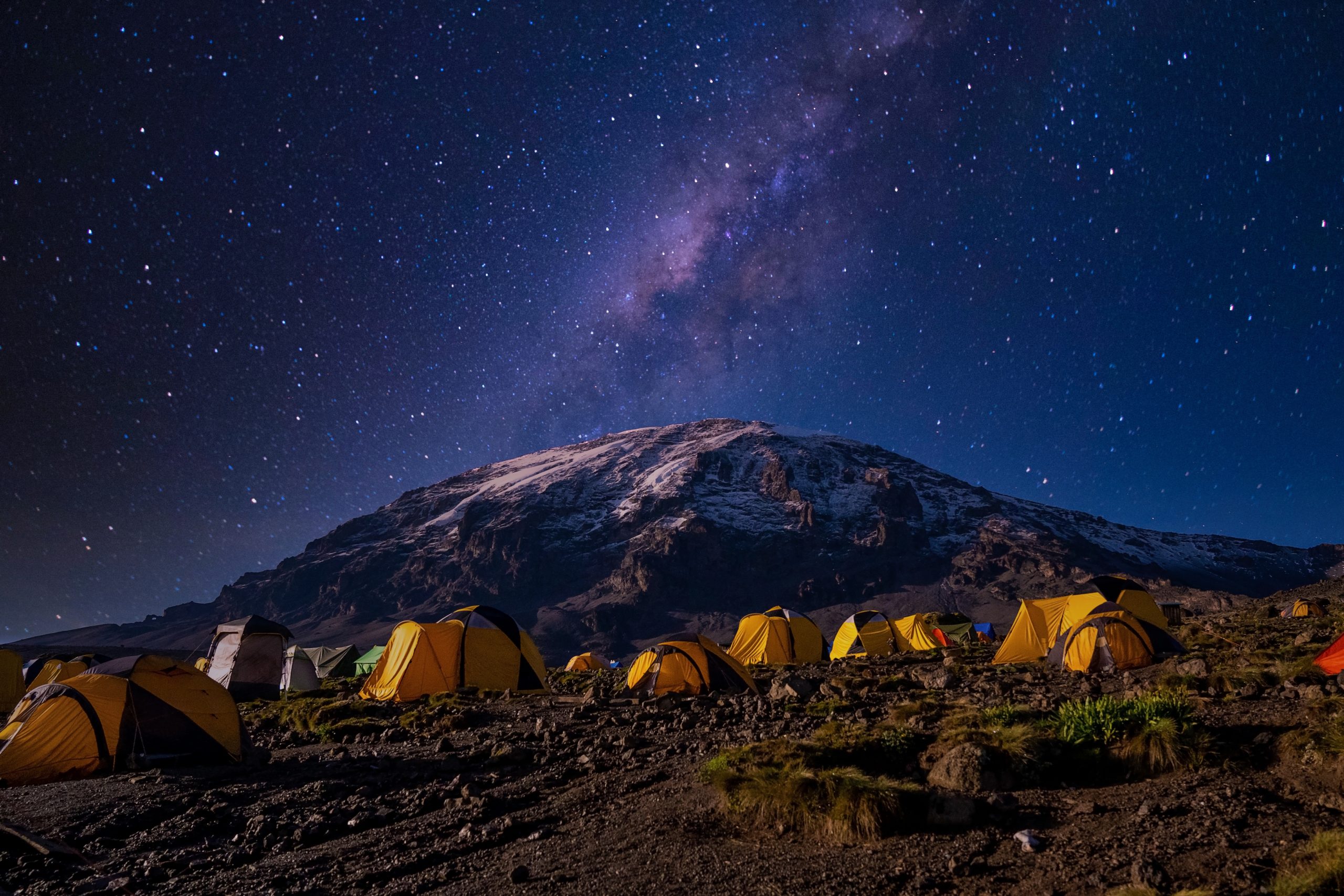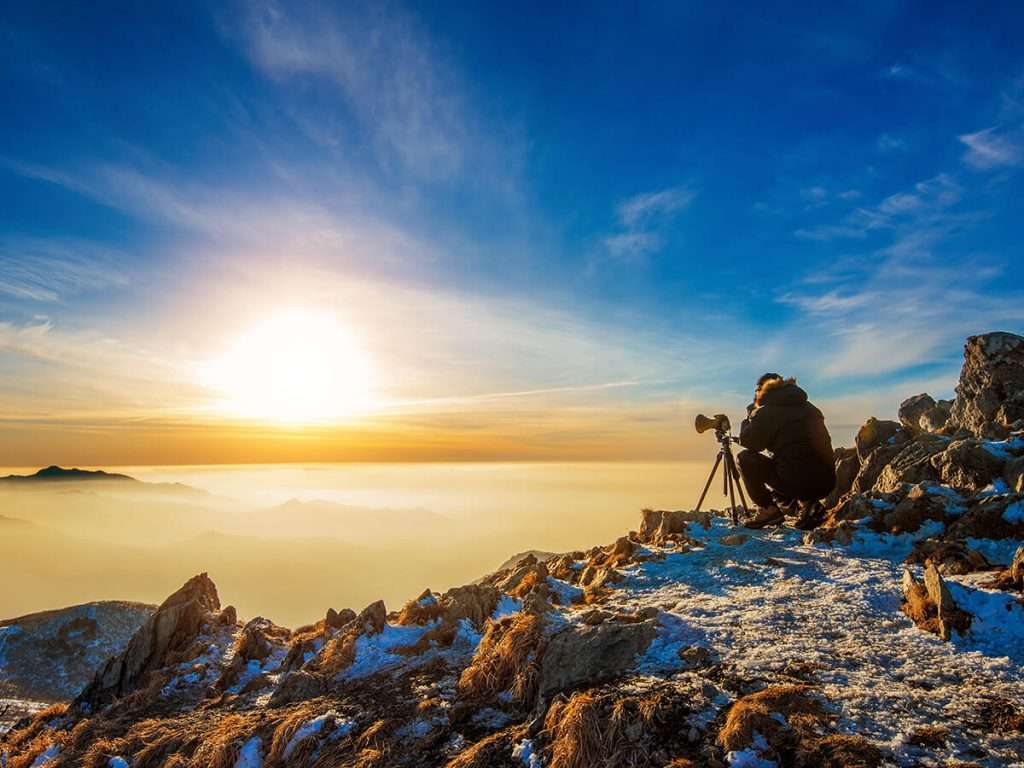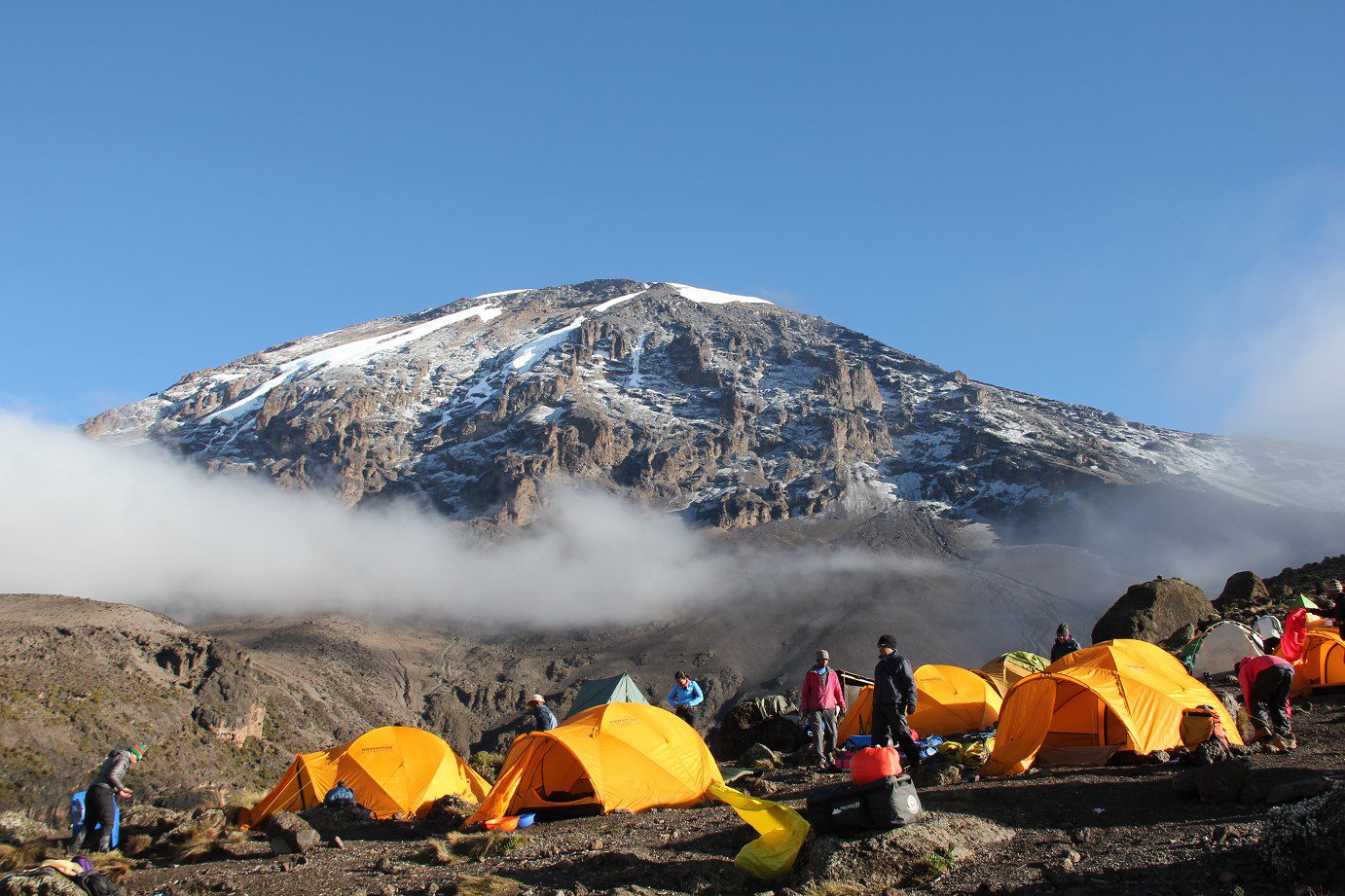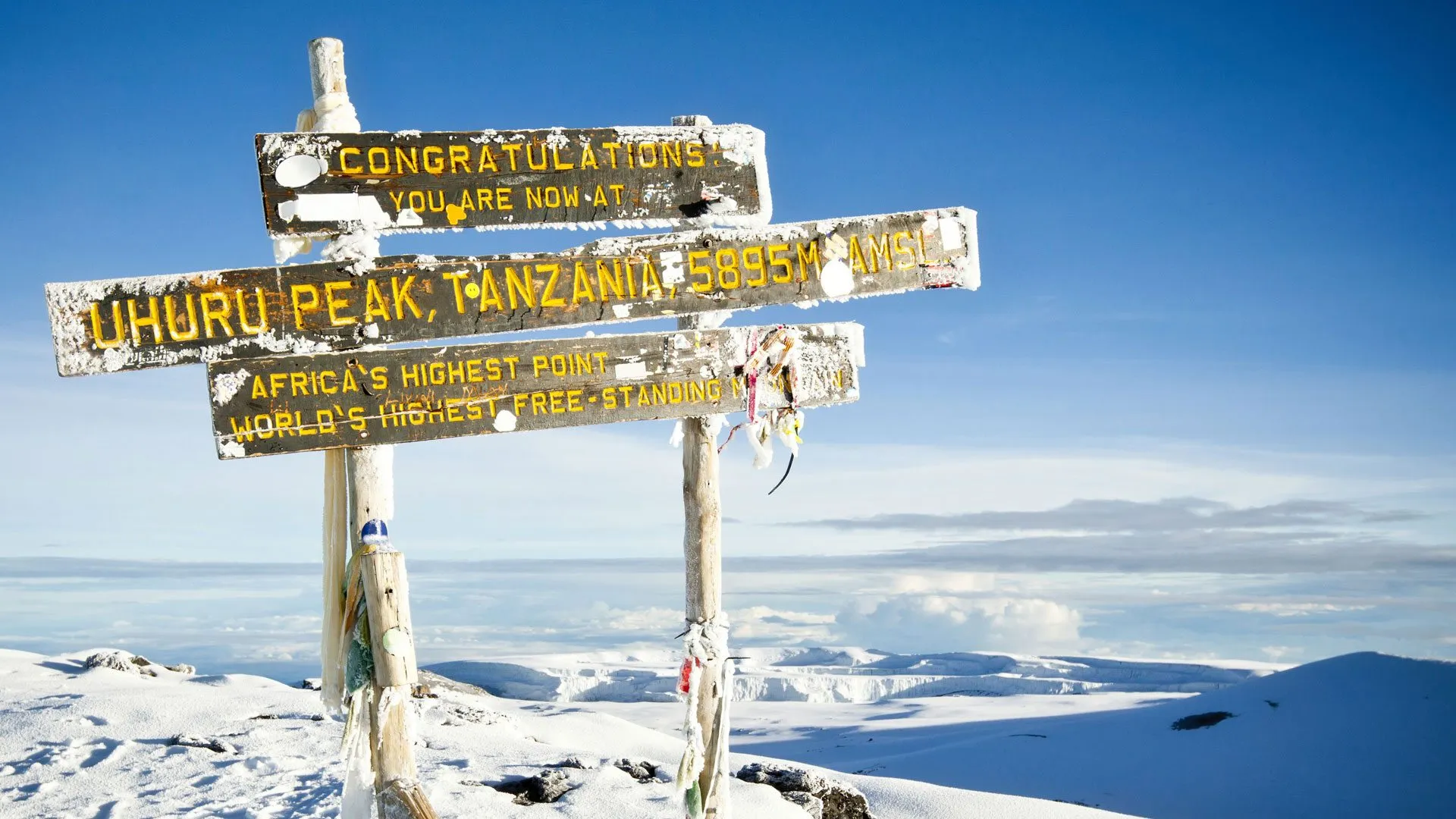Kilimanjaro 7 Days Umbwe Route Success rate of the Umbwe route between 60% and 70% and Considered to …
Climbing Kilimanjaro 2025/2026 Guide & Success Rate Calculator
Discover everything you need to know about climbing Mount Kilimanjaro, from routes to preparation tips, map, costs, reviews, holdays prices, and make your summit dream a reality. Ready for the adventure of a lifetime? Planning to climb Kilimanjaro? Our expert guide covers everything from routes to altitude tips, helping you prepare for an epic journey to the top.
Climb Mount Kilimanjaro with Specialized Tour Operators
Climbing Mount Kilimanjaro, .Africa’s highest peak mountain, stands at a height of 5,895 meters (19,341 feet) above sea level, making it the world’s tallest free-standing mountain that attracts adventure seekers worldwide. The trek offers stunning views, diverse ecosystems, and a challenge for all skill levels. Popular Mount Kilimanjaro hiking routes include Machame, Marangu, Lemosho, and Rongai, each varying in difficulty, scenery, and duration (5-9 days). The Kilimanjaro success rate of summit attempts is around 65%, with longer routes increasing chances due to proper acclimatization.
Mount Kilimanjaro climbing prices for a guided climb range from $2,500 to $5,000+, depending on the route, services, and duration. The Kilimanjaro Climbing Packages cost typically includes park fees, guides, porters, meals, and accommodations. Luxury Kilimanjaro and on-budget options are available, but it’s essential to prioritize safety and quality.
Kilimanjaro accommodations range from camping to basic huts, especially on the Marangu route. The summit stands at 5,895 meters (19,341 feet), so altitude sickness is a concern. Preparing physically and mentally is key, with several days spent adjusting to the elevation. Mount Kilimanjaro trip packages often include transport, guides, meals, and park permits, ensuring a smooth experience. Kilimanjaro remains a rewarding challenge for beginners with proper preparation. Kilimanjaro Packing List: Comprehensive Gear Guide. Everything you should know about gear for climbing Mount Kilimanjaro the highest mountain in Africa.
Majestic Mount Kilimanjaro Day Hikes Climbing Kilimanjaro most days are not very hard because the trails are not …
Kilimanjaro Northern Circuit Route 11 Days Itinerary, Prices & Dates The 11-day Kilimanjaro Northern Circuit tour is a …
Lemosho Route 7 days Itinerary, Prices & Dates Plan your perfect Kilimanjaro trek with the Lemosho Route provides …

How to Climb Mount Kilimanjaro – Guide from #1-Rated Operator
Climbing Mount Kilimanjaro is a life-changing adventure, and choosing the right guide can make all the difference. This detailed guide from the #1-rated operator walks you through every step of the journey—from selecting the best route to understanding altitude acclimatization, packing essentials, fitness preparation, and what to expect day by day on the mountain. Whether you’re aiming for the scenic Machame Route or the less-traveled Rongai, expert advice ensures your trek is safe, well-supported, and unforgettable. The operator’s experienced guides, quality equipment, and personalized service have earned them top ratings for a reason. Learn how to prepare physically and mentally, what challenges to anticipate, and how to increase your chances of reaching the summit. With the right planning and the best team by your side, you’ll not only climb Kilimanjaro—you’ll conquer it. Let this guide be your trusted companion as you take on Africa’s tallest peak, creating memories that will last a lifetime.
The #1 Guide Company for Climbing Kilimanjaro
Experience the adventure of a lifetime with the #1 guide company for climbing Kilimanjaro. Renowned for safety, expert guides, and exceptional service, we lead successful treks to the summit of Africa’s highest peak. From personalized support to top-quality equipment, every detail is designed for your comfort and success. Join thousands of happy climbers who’ve trusted us to turn their dreams into unforgettable achievements on Mount Kilimanjaro. Your journey to the Roof of Africa starts here.
The Beginner’s Guide to Climbing Mount Kilimanjaro
The Beginner’s Guide to Climbing Mount Kilimanjaro offers everything you need to know for your first trek up Africa’s highest peak. Learn about the best routes, essential gear, fitness tips, and how to prepare for altitude. Designed for first-time climbers, this guide provides practical advice, expert insights, and step-by-step support to help you summit safely and confidently. Start your Kilimanjaro adventure with knowledge and inspiration—and take your first steps toward an unforgettable achievement.

What I wish I knew before climbing Kilimanjaro
Before climbing Kilimanjaro, it’s crucial to understand that altitude sickness affects everyone differently, so acclimatization is key. You should also pack light but smart, and invest in good, broken-in hiking boots. Mental preparation is as important as physical, and summit night is significantly harder than many anticipate. Furthermore, remember that your support team is essential and that tipping is customary.
Kilimanjaro Packing List: Comprehensive Gear Guide
The Kilimanjaro Packing List – Essential Gear Guide is your go-to resource for a successful trek. Discover what to bring for every stage of the climb, from layered clothing and sturdy boots to sleeping bags and daypack must-haves. This guide helps you pack smart, stay comfortable, and handle changing mountain weather with confidence. Whether you’re a first-timer or a seasoned hiker, ensure you’re fully prepared for your journey to the summit of Africa’s highest peak. A Kilimanjaro packing list is an inventory of essential gear and clothing required for a successful trek up Mount Kilimanjaro, covering diverse weather conditions and altitudes encountered during the climb. It typically includes specialized clothing for layering, robust footwear, and various accessories like a daypack for daily essentials and a larger duffel bag for the porters.
How Much Does it Cost to Climb Kilimanjaro?
Wondering how much it costs to climb Mount Kilimanjaro? This guide breaks down all expenses, from park fees and permits to gear, guide services, and travel costs. Learn what influences price differences—such as route choice, duration, and operator quality—and discover what to expect from budget vs. premium climbs. Whether you’re planning a once-in-a-lifetime adventure or comparing options, get a clear understanding of the investment needed to reach the Roof of Africa with safety and support. The average cost to climb Kilimanjaro is $2000 to $6000, the price varies from cheap, budget operators to large Western travel agents selling outsourced climbs at an inflated price.
How Long Does It Take to Climb Mount Kilimanjaro?
Climbing Mount Kilimanjaro typically takes anywhere from 5 to 9 days, with the duration heavily depending on the chosen route and the importance of acclimatization. While shorter routes like the Marangu or Umbwe can be completed in 5 days, these are generally not recommended due to higher risks of altitude sickness. Most popular and recommended routes, such as the Lemosho, Machame, and Rongai, range from 6 to 9 days to allow for better acclimatization and increased summit success.
Interesting Facts about Mount Kilimanjaro
- Mount Kilimanjaro is one of the seven summits
- Kilimanjaro stands on its own
- The mountain is on the equator
- Three volcanic cones created it
- Kilimanjaro isn’t dead; it’s dormant.
- No one knows the real meaning of ‘Kilimanjaro
- The first ascent was more than a century ago
- Half of the people who attempt Kilimanjaro fail
- Elite athletes have climbed Kilimanjaro really fast
- The young and the old have conquered Kilimanjaro
- Kilimanjaro’s ice cap is destined to disappear
- The journey to the summit is like going from the equator to Antarctica

The complete guide to the best Kilimanjaro routes
Exploring Kilimanjaro offers a breathtaking adventure, and choosing the right route is key to a successful trek. This comprehensive guide covers the best Kilimanjaro routes, including Machame, Lemosho, Marangu, and Rongai. Each route presents unique scenery, difficulty levels, and acclimatization opportunities, catering to different climbers’ preferences. Whether you’re seeking stunning views, a less-traveled path, or a guided experience, our guide has you covered. Discover the route that best matches your adventure spirit and prepare for an unforgettable ascent to the summit.
Machame Routes
The Machame Route, often referred to as the “Whiskey Route,” is a popular trekking path on Mount Kilimanjaro. It offers stunning scenery, diverse ecosystems, and an excellent acclimatization profile, making it ideal for adventurous hikers seeking a challenging yet rewarding experience.
Lemosho Routes
The Lemosho Route on Mount Kilimanjaro is renowned for its stunning scenery and diverse landscapes. This quieter, scenic path offers a gradual ascent, ideal for acclimatization, making it a popular choice for trekkers seeking a rewarding experience.
Marangu Route
The Marangu Route, often dubbed the “Coca-Cola” route, is the most popular trekking path on Kilimanjaro. It offers comfortable huts for overnight stays, a gradual ascent suitable for beginners, and stunning views of both scenic landscapes and diverse flora.

Northern Circuit Routes
The Northern Circuit route on Kilimanjaro is a 9-day trek that ascends via the Lemosho route, circles the mountain’s northern slopes, and descends via the Mweka route, offering a longer, less crowded, and more scenic experience with a high summit success rate.
The Northern Circuit route on Kilimanjaro offers a scenic journey through diverse landscapes, including lush rainforests and alpine deserts. This longer trek, renowned for its stunning views and low traffic, provides ample opportunity for acclimatization and wildlife spotting before reaching the summit.
Rongai Routes
Rongai Routes offers diverse trekking paths showcasing stunning landscapes, wildlife, and unique cultural experiences. Perfect for adventurers seeking scenic views, these trails cater to various skill levels, ensuring an unforgettable journey through breathtaking natural beauty.
Umbwe Routes
The Lemosho Route on Mount Kilimanjaro is renowned for its stunning scenery and diverse landscapes. This quieter, scenic path offers a gradual ascent, ideal for acclimatization, making it a popular choice for trekkers seeking a rewarding experience.
Shira Route on Kilimanjaro
The Shira Route on Kilimanjaro offers a scenic trek through diverse landscapes, starting from the Shira Plateau. This lesser-known trail combines stunning views, unique flora, and a gradual ascent, making it ideal for acclimatization and wildlife spotting. Perfect for adventurous souls!

Climbing Kilimanjaro Success Rates by Routes
Climbing Mount Kilimanjaro offers various routes, each with distinct success rates influenced by factors such as altitude acclimatization and duration. The Lemosho and Northern Circuit routes boast the highest success rates, often exceeding 90% due to their longer trek time, allowing better acclimatization. Conversely, the Marangu Route has lower success rates, around 60-70%, as it’s a quicker ascent with limited acclimatization days. Choosing a route wisely can significantly enhance the chances of reaching Uhuru Peak.
Best time to Climb Kilimanjaro
The best time to climb Kilimanjaro is during the dry seasons, from late June to October and from late December to February. These months offer the most stable weather, with clear skies and lower rainfall, making conditions more favorable for trekking. Avoid the rainy seasons (March-May and November) as trails can be slippery, and visibility is reduced. However, temperatures at the summit remain cold year-round, so proper gear is essential. The best recommended time to climb Kilimanjaro is during its dry season, spanning from December to mid-March and late June to October. The most favorable months are January, February, July, August, September, and October. These months are when the weather conditions are at their best.

How Hard is it to Climb Mount Kilimanjaro?
Climbing Mount Kilimanjaro is generally considered moderately difficult, but not technically challenging like climbing a peak requiring mountaineering skills. While it’s accessible to many with proper preparation, it does demand significant physical and mental endurance due to the altitude, unpredictable weather, and long trekking days.
Most Effective ways Preparing to Climb Kilimanjaro
Discover the most effective ways to prepare for climbing Mount Kilimanjaro with this essential guide. Learn how to train physically, choose the right gear, plan for altitude acclimatization, and build mental stamina for the journey ahead. From fitness routines to packing tips, this guide ensures you’re fully equipped for a safe and successful summit. Whether you’re a seasoned hiker or new to trekking, prepare with confidence and take on Africa’s tallest peak with strength and clarity.

